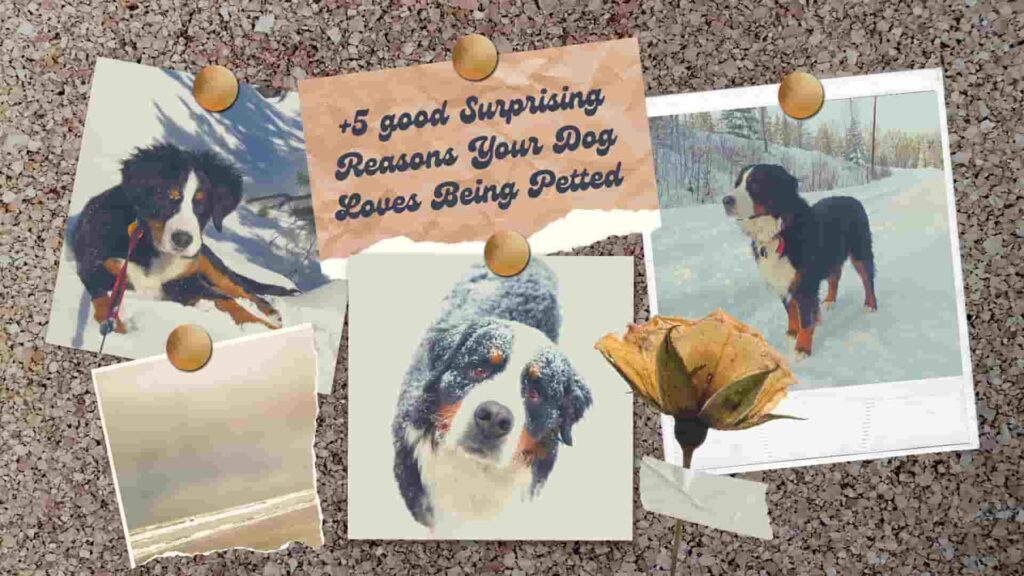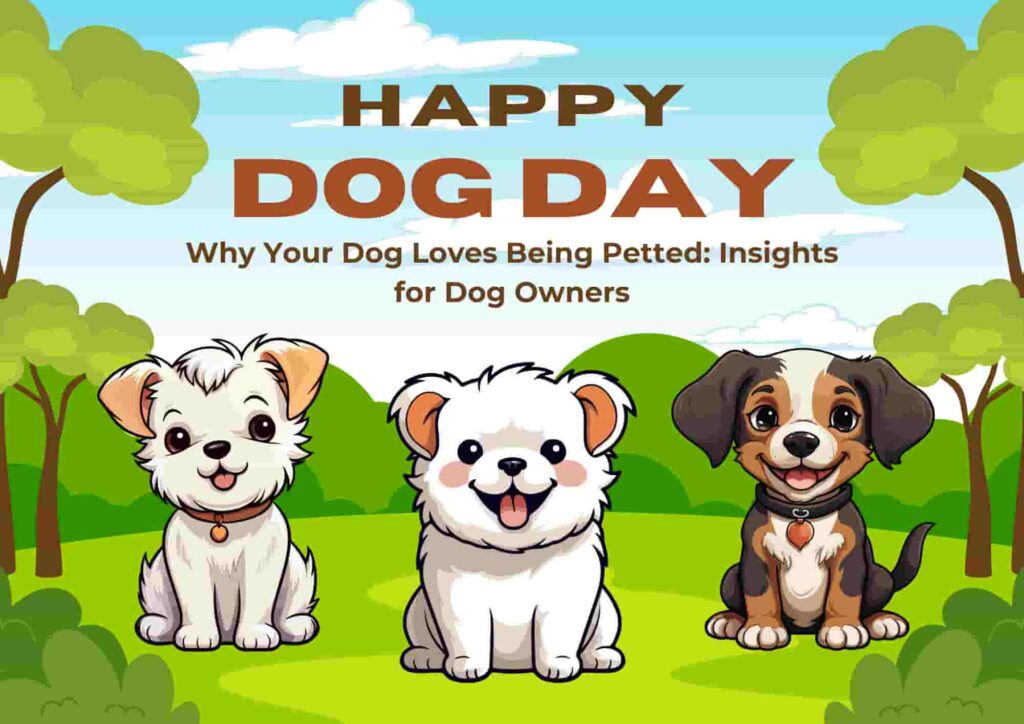Why Your Dog Loves Being Petted: The Benefits Explained
Petting is more than just a simple touch; it serves as a vital mode of communication between you and your Dog Loves, conveying affection and a sense of safety.
This interaction is not only comforting to Dog Loves but also plays a crucial role in the release of oxytocin in their brains. Oxytocin, often called the ‘cuddle hormone,’ enhances feelings of happiness and trust.
Building Bonds
The act of petting strengthens the emotional bond between a dog and its owner. It establishes a profound sense of trust and security, making your dog feel loved and protected.
This connection is essential for developing a strong, healthy relationship.
Mutual Benefits
Petting is mutually beneficial. While it provides comfort and satisfaction to dogs, it also offers significant health benefits to humans, including stress reduction and a boost in happiness. This reciprocal effect enhances the overall wellbeing of both the pet and the owner.
Petting is a fundamental aspect of the relationship between dogs and their owners. It’s a simple yet powerful way to express care and affection, benefiting both emotionally and physically.
So next time you pet your dog, remember that this small gesture goes a long way in reinforcing your loving bond.

Why Dog Loves Enjoy Being Petted, Understanding the Joy Behind the Touch
The Science of Canine Affection
Dogs greatly appreciate petting, as it provides both comfort and security while strengthening their bond with humans.
This physical interaction prompts the release of oxytocin, commonly known as the “love hormone,” which enhances their feelings of happiness and strengthens their affection and trust towards their caregivers.
Biological and Emotional Responses to Petting
Petting induces oxytocin release in dogs, fostering feelings of joy and bonding. This response, rooted in their neurology and behavior, deepens the emotional connection between dogs and their owners, offering reassurance and enhancing their sense of security and belonging.
Understanding these scientific principles underscores the importance of affection in the unique relationship between humans and dogs, highlighting the reciprocal benefits of these interactions.
Read more: Why Dogs Enjoy Being Petted
Mastering the Art of Petting
Knowing how to pet a dog correctly involves recognizing and respecting their preferences, which can be understood by observing signals like wagging tails or relaxed postures.
Gentle strokes and understanding the dog’s receptive cues are crucial, creating an enjoyable experience that respects the dog’s comfort levels.
Health Benefits of Petting
Beyond emotional benefits, petting serves as a practical health check for dogs. It helps detect skin issues or hidden ailments and provides a relaxing effect that reduces stress and lowers blood pressure for both the pet and the owner.
Noticing and responding to a dog’s discomfort during petting can prevent further pain and aid in timely medical intervention.
Preferred Petting Techniques for Dog Loves
Dogs typically enjoy a variety of touches, from ear scratches to belly rubs. However, when meeting a new dog, it’s important to approach cautiously, especially around sensitive areas.
Starting with less intrusive touches like allowing the Dog Loves to sniff your hand can set a positive tone for further interaction.
Recognizing a Dog’s Comfort with Petting
Signs of a dog’s comfort with being petted include a softly wagging tail or friendly licking. Observing these signs helps ensure that the petting experience is pleasurable for the dog.
Always confirm with the owner and the dog’s body language before proceeding, particularly if the dog might have sensitive areas due to health issues.
Effective Petting Practices
Initiate petting with a gentle approach, allowing the dog to first acknowledge and accept your presence. Focus on less sensitive areas initially, such as the chest or shoulders, and closely watch the dog’s reactions.
A positive response, such as nuzzling or a relaxed posture, indicates readiness for more extended petting.
Conclusion
Petting is a powerful way to express care and build a lasting bond with dogs, providing significant benefits for both the pet and the owner.
Understanding and practicing the right petting techniques can enhance this shared joy, reinforcing a deep, affectionate relationship with your canine companion.
Why Your Dog Loves Being Petted: Insights for Dog Owners
Understanding Canine Affection Through Petting
Petting is more than just a physical interaction for dogs; it’s a vital form of communication that conveys affection and safety. When you pet your dog, it stimulates the release of oxytocin, also known as the ‘cuddle hormone,’ which enhances feelings of happiness and trust.
Also read: the-mystery-of-blue-eyed-calicos
This act not only deepens the emotional bond between you and your dog but also promotes a sense of security and belonging for your pet.
The Joy of Petting for Dogs and Their Owners
Petting is a mutually beneficial activity that calms and satisfies dogs while simultaneously reducing stress and increasing happiness in humans.
This shared benefit underscores the significance of petting as a foundational element in strengthening the unique and loving relationship between dogs and their human companions.

Where Do Dogs Prefer to Be Petted?
While each dog may have individual preferences, many dogs enjoy being scratched in areas like the chest, neck, and along the back. The act of rolling over to expose their belly is often an invitation for a belly rub, a sign of trust and comfort with the person petting them.
As you become more familiar with a dog, paying attention to their likes and dislikes allows for an even stronger bond to form.
Why Dogs Love Ear Rubs
The area behind a dog’s ears is filled with nerve endings, and rubbing this spot can trigger the release of oxytocin and other feel-good hormones, providing pleasure to your furry friend.
Due to the sensitivity of this area, it’s important to be gentle and watch for the dog’s reactions, ensuring they are comfortable with the interaction.
Also read: Cold-comfort-are-huskies
Understanding Dogs’ Reactions to Petting
Observing a dog’s response to being petted is crucial. Signs that a dog enjoys being petted include relaxed body language and wagging their tail enthusiastically in your presence.
These gestures not only signal their comfort and happiness but also reinforce the deep bond shared between you and your dog.
Conclusion
Recognizing the signs of affection and trust that dogs show towards their owners is essential for understanding why they cherish being petted.
This simple act of kindness enriches the lives of both dogs and their owners, fostering a loving and trusting relationship that enhances mutual well-being.
FAQ’s:
Why do Dog Loves being pet so much?
Petting triggers the release of oxytocin, known as the “love hormone,” in dogs’ brains, enhancing feelings of affection and trust. This hormonal response is mutual, with humans also experiencing an oxytocin boost when they pet Dog Loves, fostering a unique bond between the species.
Does your dog really want to be petted?
Before petting a dog, it’s important to ensure they are open to it. Signs that a dog welcomes petting include sniffing you and showing relaxed body language, such as soft ears and a relaxed tail.
Where do dogs like to be petted the most?
Dogs have favorite spots that when petted, can enhance their comfort and bonding with humans:
- Chest: Often enjoys strokes in the chest hollows.
- Ears: Responds well to gentle, long strokes.
- Shoulders: Likes gentle massages.
- Base of Tail: Often enjoys attention here.
- Under the Chin: Prefers soft strokes.
- Neck: Enjoys caresses around the neck.
Why is it so satisfying to pet a Dog Loves?
Petting a Dog Loves decreases cortisol, the stress hormone, and increases oxytocin levels, creating a calming and pleasurable interaction. This effect is similar to the bonding experienced between mothers and their infants.
Why do Dog Loves to be pet on their stomach?
When dogs expose their stomachs for petting, it’s a sign of trust and comfort. This area is sensitive and can provide soothing sensations when rubbed gently, deepening their bond with humans.
Do Dog Loves being hugged?
Dogs’ preferences for hugs can vary. While some may view hugs as restrictive, others, particularly those accustomed to close contact from a young age, may associate hugs with affection and security, reacting positively based on their trust and relationship with the person.
0 Comments